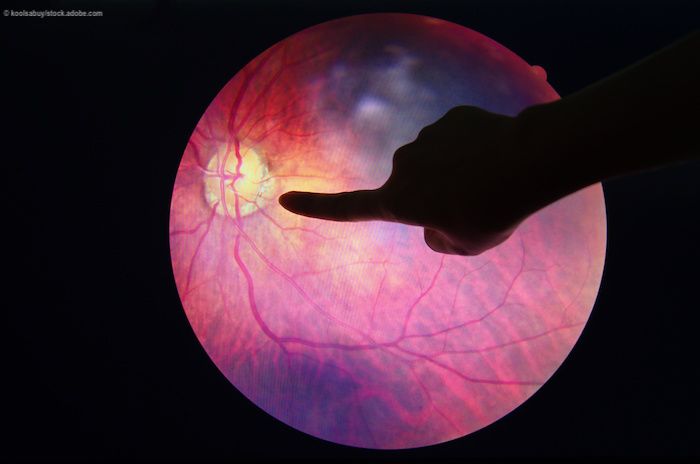Article
Pipeline reveals bright future for combating diabetic eye disease
Author(s):
Despite the latest advances in anti-VEGF therapy, a small group of patients do not achieve improved vision. Ophthalmologists are looking for options.

Reviewed by David S. Boyer, MD
When treating diabetic retinopathy (DR), the current approach for physicians remains medical management, specifically maintaining control of blood sugar, blood pressure, and lipids and encouraging smoking cessation.
Remarkably, for each 1% decrease in hemoglobin A1C, the risk of complications decreases by 28% to 35%, David S. Boyer, MD, an adjunct clinical professor of ophthalmology at the University of Southern California Keck School of Medicine in Los Angeles, outlined in a presentation at the American Academy of Ophthalmology’s annual meeting in Chicago.
So why are additional treatments needed for patients with diabetic eye diseases? The answer is that despite the latest advances in anti-VEGF therapy, a small group of patients do not achieve improved vision. Boyer pointed out that 40% of eyes have a suboptimal response to monthly intravitreal VEGF injections.
Drugs for diabetic eye disease
Numerous intravitreally injected anti-VEGF drugs for DR with different mechanisms of action are undergoing investigation. These include aflibercept (Regeneron/Bayer), OPT-302 (Opthea), THR-149 (Oxurion), KSI (Kodiak), and PDS/ranibizumab (Genentech), as well as multiple biosimilar drugs that work on controlling VEGF-A and VEGF-B.
Orally administered drugs for diabetic eye disease also are under study. These include APX3330 (Ocuphire), an REF-1 inhibitor; BAY1101042 (Bayer), a guanylate cyclase activator; AKST4290 (Alkahest), a CCR3 eotaxin inhibitor; RG7774 (Roche), a CB2 receptor; and HCB 1019 (InflammX), connexin 43, all of which are for treating DR; and RZ402 (Rezolute), plasma kallikrein for diabetic macular edema (DME).
The hope, according to Boyer, is that the oral agents will reduce the number of injections administered and provide visual improvements.
Topical therapies are also in the pipeline: SFO-166 (OcuTerra), an integrin in a phase 2 study; and OCS-01 (Oculis), a steroid in a phase 1 study (NCT05409235).
Pharmaceuticals further along the pipeline
High-dose (8 mg) aflibercept, currently in a phase 3 trial, may be active for a longer duration and provide better drying. The drug demonstrated excellent safety without toxicity. The treatments were extended out to 12 and 16 weeks with 8.8 and 7.9 letter gains, respectively, with decreased frequency of injections.
Regenix Bio’s RGX-314, a gene therapy injected into the suprachoroid, provides a long duration of action and a 2-step or greater improvement in the Diabetic Retinopathy Severity Score (DRSS) in 33% of patients at month 3 and in 47% of patients at month 6. These improvements were achieved with 1 injection. The therapy works by reducing blood vessel formation by providing ocular cells with the ability to produce an anti-VEGF fab and has not demonstrated any inflammation. “This is one of the most exciting treatments available for [patients with] DR,” Boyer stated.
Opthea’s OPT-302 is an intravitreally injection combination therapy targeting DME by inhibiting VEGF-C and VEGF-D. When used in combination with an anti–VEGF-A therapy, VEGFR-2 and VEGFR-3 signaling are blocked completely. In a small post hoc analysis, the mean change in the best-corrected visual acuity (BCVA) from baseline to week 12 was 6.4 letters when OPT-302 was injected with 2 mg of aflibercept compared with 3.4 letters with aflibercept alone. In addition, the number of patients who gained 10 or more letters with the combination therapy was much higher than with aflibercept alone, 27.3% versus 0%, respectively.
Genentech’s PDSinsert is a long-acting drug. In the phase 3 noninferiority PAGODA study (NCT04108156), 545 patients with DME were randomly sassigned to PDS 100 mg/mL that was refilled at 6-month intervals or ranibizumab 0.5 mg. The change in the BCVA at week 64 compared with baseline is the primary end point. These results are forthcoming. “This approach decreases the treatment burden tremendously,” Boyer said.
PAVILION (NCT04503551), a second study of the efficacy and safety of PDS is also under way in patients with moderately severe or severe nonproliferative DR without DME. The primary end point is the percentage of patients with a marked improvement of more than 2 steps in the DRSS at 1 year of treatment. Patients will be treated once every 6 months and hopefully disease progression will be reduced . [Editor’s note: Following this presentation, Genentech paused new implants due to the failure of the insert.]
Kallikreins, which are serin proteases, also may provide better drying and visual improvements and may be used alone or in combination with anti-VEGF therapy. They are currently being evaluated as an intravitreal injection and also as oral agents.
“Diabetic retinopathy is a multifactorial disease. I am hoping that these new agents that are in clinical testing will be able to improve vision, decrease frequency of injections, allow easier routes of administration or improve diabetic retinopathy severity allowing us to take better care of our patients with diabetic eye disease,” Boyer concluded.
David Boyer, MD
E: vitdoc@aol.com
Boyer is a consultant to Regeneron, Opthea, Oxurion, and Genente.
Newsletter
Don’t miss out—get Ophthalmology Times updates on the latest clinical advancements and expert interviews, straight to your inbox.





